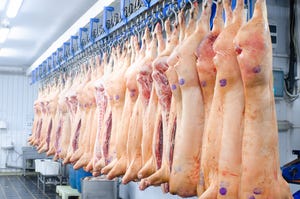Farm bill field notes

THE rollout of this year's farm bill commodity title poses tough decisions for farmers, and there's no rule of thumb to easily decide which one will work best, Carl Zulauf, Ohio State University agricultural economist, told farmers at a farm show last week.
"There is no unifying principle in agricultural policy anymore except for the management of risk. The problem with that is that risk varies around the country," Zulauf said.
He noted that the only way the farm bill got passed into law was to have three coverage options: the Price Loss Coverage (PLC) program, Agriculture Risk Coverage-individual (ARC-IC) and Agriculture Risk Coverage-county (ARC-CO).
The following are some interesting points for producers to think about when moving forward on decision-making over the next few months.
Know your risk
Although it's a five-year decision, producers will be able to make it with 80% of the 2014 crop year completed.
Barry Ward, assistant extension professor at Ohio State and farm business specialist, explained that if a producer is more risk adverse, PLC likely would be the right option.
For more of a risk taker, it appears that ARC-CO will pay out for 2014, and a farmer could take a chance on whether it pays out in future years as well, Ward said.
The PLC program is a revised target price program on a 12-month marketing year price average. The reference price is $3.70/bu. for corn and $8.40/bu. for soybeans.
Zulauf suggested that if a farmer thinks there might be a disaster price scenario over the life of the farm bill that results in, say, $2/bu. corn, "PLC clearly dominates."
If corn prices amble along at $3.50-4.50/bu., Zulauf said ARC-CO could make fairly substantial payments as it's designed to better account for the accumulation of shallow risk.
Calculator aids
During the week of Sept. 15, the Farm Service Agency (FSA) met with its state directors to help train them on the new commodity title programs. It is expected that the regulations could be out within the next couple of weeks as FSA heads come back and train their local staff.
Zulauf expects calculator aids to be available possibly as soon as Sept. 25 as programmers add the finishing touches of the regulations into the decision aid.
Zulauf warned, though, that a calculator is only as good as the data inputted into it. "If you don't have good-quality info to put in, you won't have good output. It's a decision aid, not a decision-maker," he added.
Landowner choices
This farm bill puts an increased focus on the landowner rather than the operator of a farm. This could be challenging for farmers who work with several different landowners and especially for those who are elderly.
Instead of just getting a signature for FSA farm decisions, as in the past, the actual landowner will be responsible for going into FSA offices and making decisions on base and yield reallocation as well as which program each farm will participate in.
Volume:86 Issue:39
About the Author(s)
You May Also Like




.png?width=300&auto=webp&quality=80&disable=upscale)
